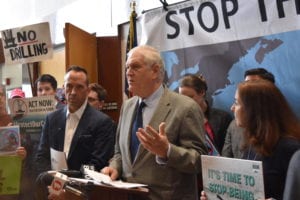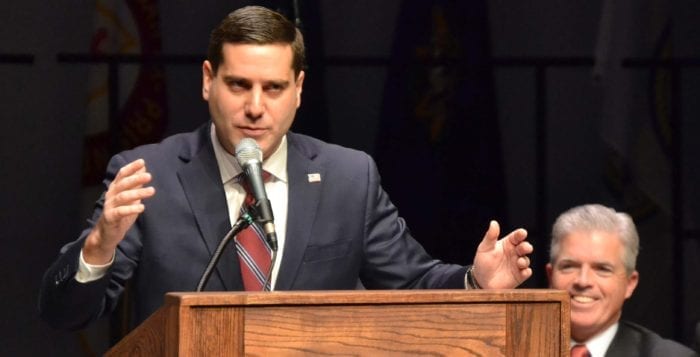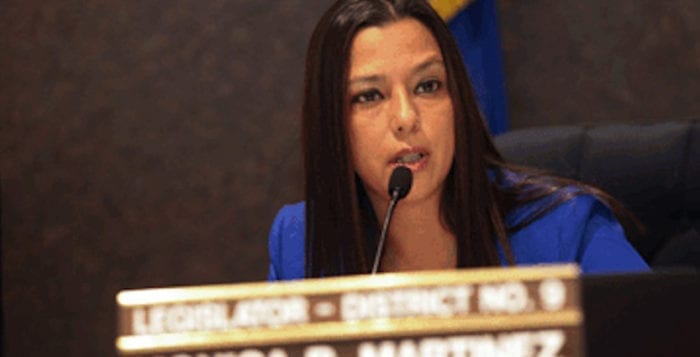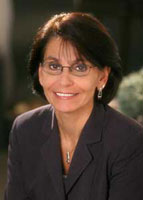Long Islanders filled the legislative auditorium of the William H. Rogers Building in Hauppauge Feb. 14 to let the federal government know that the Atlantic Ocean is not the place for offshore drilling.
In a public hearing, state legislators, including Assemblyman Steve Englebright (D-Setauket), listened to more than five hours of testimony provided by nearly 50 local elected officials, scientists and environmentalists. The hearing followed the Jan. 4 announcement made by the U.S. Department of the Interior proposing plans for expansion of natural gas and oil drilling along coastal waters. The plan includes the potential lease of acreage in federal offshore areas such as the Atlantic region.
In the Jan. 4 announcement, Ryan Zinke, secretary of the interior, said developing resources on the Outer Continental Shelf would provide billions of dollars to fund the conservation of coastlines, public lands and park. He noted that not all areas are appropriate for offshore drilling and laid out the plan for hearings across the country in the areas that may be affected.
“The important thing is we strike the right balance to protect our coasts and people while still powering America and achieving American Energy Dominance,” Zinke said in the statement.

“The Atlantic Outer Continental Shelf is not an appropriate area for offshore drilling, period,” Englebright said in the beginning of the Long Island hearing. “There are many reasons for that, and we’ll hear some of those reasons, I’m sure, today, but the risks associated with drilling, including oil spills, far outweigh any potential benefits. Especially since the state is currently working to advance renewable energy projects on our continental shelf area rather than climate change inducing, fossil fuel-oriented projects such as the drilling.”
While the federal government chose to hold a public hearing in Albany Feb. 15, Englebright said the location, as opposed to coastal areas in the state, was not the right spot for such a hearing as inland would not be impacted like coastal areas would be if offshore drilling would occur in the Atlantic. He also said many who live by and are worried about local waters may not have been able to travel to the federal hearing.
Speakers during the Long Island hearing touched on the ramifications drilling would have on the area in regard to water quality, marine life, coastal management and more.
Brookhaven Town Supervisor Ed Romaine (R), who wrote two letters to Zinke, one opposing drilling in the Atlantic and Arctic oceans and another one requesting a hearing on Long Island, read from one of the letters.
“Brookhaven Town has the largest coastline of any town on Long Island with three distinct coastal waters; ocean, bay and sound,” Romaine said. “As supervisor, I do not support drilling in waters off our coastline.”
The supervisor said he supported forms of renewable energy such as wind, solar and geothermal because an oil spill anywhere along the Atlantic coast could decimate large portions of the town’s coastline and negatively affect the coastal economy.
“The 1970s called, and they want their energy plan back.”
— Adrienne Esposito
“The Long Island coastline supports nearly 350,000 jobs and generates millions of dollars through tourism, fishing and other industries,” Romaine said, adding he was also concerned about the potential environmental harm to Fire Island.
Romaine said he’s also concerned about the expiration of the 9-cent per oil barrel tax which funds emergency cleanups of spills. He said the lack of a congressional plan to extend the tax makes ocean drilling riskier than ever.
Adrienne Esposito, executive director of Citizens Campaign for the Environment, also suggested more modern energy solutions.
“The 1970s called, and they want their energy plan back,” she said.
Esposito cited a 1990 study that was conducted after the 1989 Exxon Valdez oil spill in Prince William Sound, Alaska. She said the study showed a $19 million decrease in tourism dollars the summer of the oil spill in Alaska and 43 percent of businesses in the Gulf of Alaska significantly or completely shut down. Esposito said the ocean generates $24 billion into New York’s economy every year. She also raised health concerns, calling crude oil a toxin.
“It causes kidney liver and lung damage and can even kill people,” Esposito said. “It can cause neurological damage and endocrine disruption — things that are vastly overlooked.”
Speakers also highlighted the effects of seismic testing, which uses air gun blasting to locate underwater fossil fuels. Guy Jacob, conservation chair of the Nassau Hiking & Outdoor Club, said seismic booms are among the loudest underwater noises recorded and the proposed plan would give businesses permission “to fire seismic air guns every 10 seconds, 24 hours a day for months.” He said that a single vessel could deploy up to 96 air guns, which in turn is damaging to marine life and the fishing industry.
“Seismic blasts drive commercially-viable fish literally running for their lives. While the fossil fuel industry profits, our fishing industry suffers.”
— Guy Jacob
“Because water is such an excellent conduit for sound, seismic blasts become weapons of mass mutilation maiming and slaughtering organisms, from the largest whales to the most diminutive invertebrates throughout the web of marine life,” Jacob said. “Seismic blasts drive commercially-viable fish literally running for their lives. While the fossil fuel industry profits, our fishing industry suffers.”
Kevin McAllister, founder and president of the nonprofit Defend H2O, spoke of the ecological impacts from oil spills at the hearing. He said after the 1969 Santa Barbara oil spill, 36,000 birds and hundreds of marine mammals died. McAllister said only 10 percent of the oil was effectively cleaned up after the Exxon Valdez spill, and as of 2007, more than 26,000 gallons of oil remain in shoreline sentiments. According to McAllister, the 2010 Deep Water Horizon oil spill in the Gulf of Mexico impacted 68,000 square miles of ocean, the size of Oklahoma, and washed up on 1,074 miles of coastline.
During a phone interview after the hearing, McAllister said he felt the hearing was productive. He said he hopes other Atlantic states will join in a lawsuit against the federal government if New York state moves forward in filing one. During the hearing, Peter Washburn, policy adviser in the attorney general’s environmental protection bureau, said the New York State Attorney General is prepared to sue the interior department.
Englebright said a transcript of the hearing will be submitted to the federal government prior to March 9, the end of the comment period.


















